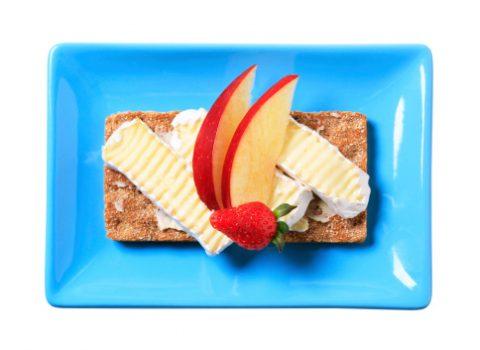The links between sugar consumption and devastating health problems are widely publicized.
Not only is it a major player in the realm of weight gain and obesity, as well as a potential component in the onset of diabetes, but it can also be attributed to cerebral problems like memory loss and Alzheimer’s. Simply cutting out table sugar is not enough to support the change necessary to reduce these risks. It’s essential to take a deeper look at where these sugars are hidden and why we consume so much. Additionally, it’s also important to become informed about which sugar substitutes and fat loss supplements are available to help reverse some of these negative effects.
Some of the confusion in this area stems from misleading information put forth by the food industries regarding what their products really contain. Seeking information from sources outside of the packaging of your food can be vital in discerning what, in fact, sugar really is, where it comes from, and what its role is in our daily diets. It’s also crucial to take into account what effects it can have on the body and where it contributes to health problems. Furthermore, how individuals can take action in reducing their own health risks and making sure that sugar additives start to become the exception rather than the rule.

The USDA has estimated that, on average, each person consumes around 156 pounds of sugar annually. An even more frightening figure comes from looking at this on a daily level. The Center for Disease Control (CDC) estimates the average person consumes 27.5 teaspoons per capita of added sugar daily. Imagine putting that amount in one cup of coffee and you'll have some idea of the sheer bulk of this number. While these sums are almost unbelievable, the scope of it all becomes more clearly illuminated when sugar sources are put under the proverbial microscope.
Most Americans are familiar with the food pyramid, the guide for daily healthy meal consumption as discerned by the USDA. Yet, over the years, its servings and recommendations have become slightly skewed. This skewed perception is, in large part, a result of marketing efforts supported by food manufacturers which deceive consumers about the food they’re really eating.
It’s easy to remember the basics, that grains should constitute the greater part of the diet, that fats and sweets should be consumed in extreme moderation and so on. As a basic principle, this is a good dietary guideline to follow. However, the pyramid does not take into account that several of the products available to consumers are prepackaged and processed. When we take a good hard look at the sugar levels that are hidden in these commonly consumed meals, it becomes clear that recommended consumption levels are grossly exceeded every day.
Consumers are also met with a harsh reality when it comes to the process of breaking down sugars. First of all, many people don’t realize that some foods that aren’t necessarily sweet are recognized as sugar by the body. A great example of this is white flour. This is ultimately an important example since white flour is found in thousands of commonly eaten foods such as bread, pasta, crackers, and cereal – staples to many American households. When we review the food pyramid, it becomes strikingly obvious that the grains section, as most people see it, should not include white flour.

Furthermore, dietary guidelines should consider processed foods. There are some obvious examples of sweets that are easy to classify such as cookies and candies, but the dividing line between unhealthy food and items that are beneficial to a person’s diet becomes less clear when the content of otherwise healthy foods like yogurt, processed meats, and flavored drinks are added to the mix.
In understanding sugar’s damaging effects, it’s a good idea to look at how the body breaks down and digests this compound. Try using the analogy of the body being a machine, and the food we eat the fuel that makes the machine run. Many of the foods we eat contain sugar molecules but they are still structured and unrefined, as well as thrown in the mix with important components like fiber. Excellent examples of this include whole grain breads or certain fruits, like apples. When we eat a food that’s constructed in this way, the body has to work to digest these elements, subsequently improving the metabolic rate.
In the case of refined sugar, digestion begins immediately with enzymes in the saliva breaking down the sugar molecules. These are delivered quickly into the blood stream, causing extreme spikes in blood sugar levels. This is where a sugar high or energy rush comes from. The same thing happens when eating other foods, but since they take longer to digest, the sugars that fuel the body are released over time. In a sense, simple sugar turns the body into a gas guzzling SUV where consumption of healthier options makes the human system into a fuel efficient vehicle.
At the most basic level, cutting sugar consumption will cause the body to run more efficiently. Instead of these extreme energy spikes and debilitating lows, a person is likely to feel well fueled and consistent throughout the day. Decreasing these levels will also seriously impair some of the innumerable risks that come with elevated sugar consumption. Many are surprised to find that beyond obesity and weight gain, sugar can be linked to cancer, can weaken eyesight, and interfere with the absorption of proteins. These are among 146 ways that sugar is linked to health issues as described by Nancy Appleton, PHD and Clinical Nutritionist in her book, Lick the Sugar Habit. Ultimately, the data to support a serious sugar reduction is not only present, it’s prolific.

Moving on from the question of why, it’s time to address the matter of how. Initially, cutting sugar can be extremely difficult. The metabolic imbalances it causes in the system are what produce cravings for sweets. It can be a helpful option to start the reduction process with artificial sweeteners like Splenda or Truvia. Another idea is to begin choosing foods whose sugar content is greatly reduced. Even in the case of fruit, you can make smarter choices than others. For example, choosing an apple, which is high in fiber and lower in their natural fructose content, provides a better choice than fruits like bananas or dates, whose sugar levels are sky high.
Frankly, there’s no denying that sugars are going to be a constant invader in our diets. Unfortunately, every trip to the supermarket is filled with the bombardment of products that do not help our health battle. The object of most companies it to get us to consume, not take a look at what we are really putting into our systems. With a slew of misleading packaging and information that is often concealed from the public eye, it takes a vigilant consumer to start making the choices that put their health back in their own hands.
Being informed is one of the best weapons a person can have to fight health risks and prepare themselves to be an active and smart consumer. Find out more information on health at Primal Muscle and what you can do to stay fit and make smarter daily decisions.
Originally published on NaturalPapa
You May Also Like:
[aolvideo src=“http://pshared.5min.com/Scripts/PlayerSeed.js?sid=1759&width=480&height=315&playList=518554838&responsive=false”]
*Images of “woman“ and ”white bread“ via Shutterstock


Friends Read Free